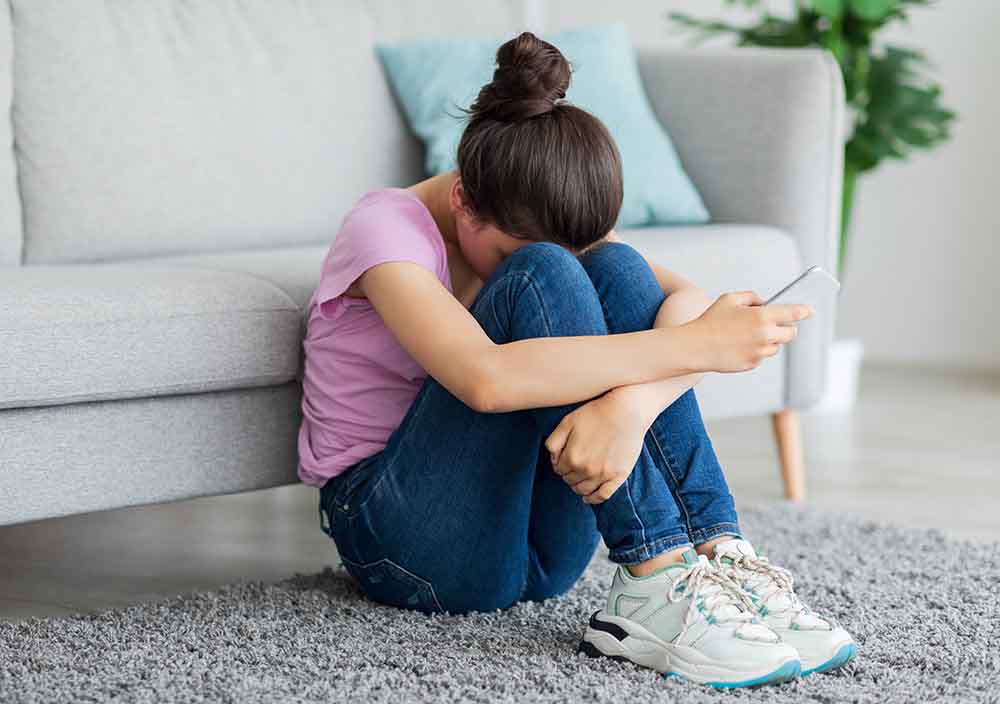India has around 253 million adolescents, and around 47 per cent of these are female. This period of transition from childhood to adulthood comes with social, physical, and psychological changes. In India, the Government offers the Scheme for Adolescent Girls (SAG) programme to provide support to girls across areas like nutrition, education, and empowerment. Despite these efforts, India’s female adolescents face numerous challenges regardless of their socioeconomic status. Here are some pressing issues that need to be addressed.
Peer Pressure
A Report by UNICEF states that both adolescent girls and boys in India lack access to information on issues affecting their lives and have limited spaces to develop competencies crucial for active participation. The report reiterates that adolescent girls are especially exposed to multiple layers of vulnerability due to pernicious social norms affecting the value of girls, which in turn affects their ability to move freely and to make decisions affecting their work, education, marriage, and social relationships. A study conducted by NIMHANS in 2023 revealed that 85 per cent of high school students have endured peer pressure. It also found that these students were more likely to engage in substance abuse. 32 per cent of girls experience peer pressure about their body image, as opposed to just 19 per cent of boys.
‘Peer influence can have both positive and negative influences on young adolescent girls,’ says psychiatrist Dr Bhim Varadarajan. ‘Peer interactions are necessary to develop social skills, and gain various perspectives about the world around you. At the same time, it can also lead to peer pressure. This is very simply defined as ‘influence from members of one’s peer group’. It is the feeling that you have to do whatever it takes to fit in, to be liked or respected by them, even if you are unable to or don’t want to. It is linked to lower self-esteem, depression, anxiety, and the inability to function cognitively. This is further exacerbated by the use of social media. Far too many teenage girls are on social media, and want to keep up with their peers by projecting the same image.’
Child Marriage & Adolescent Pregnancy
According to a report published by ICRW as part of its PanKH Programme, ‘The district of Dholpur, Rajasthan, has a population of 1.2 million, with approximately 100,000 adolescent girls in the age group of 12-19 years. The district shows a high prevalence of child marriage and low knowledge of sexual reproductive health (SRH) among adolescent girls and was thus identified as one of the high-priority districts under the National Health Mission, Government of India. It is also listed as one of the aspirational districts identified by NITI Aayog for accelerating development on several indicators, including health, nutrition, and education… Early marriage is linked with poorer health outcomes, economic insecurity, gender inequality, and experiences of domestic violence, including intimate partner violence. Physical mobility and decision-making ability of girls who are married as adolescents are also likely to be more restricted than others.’
Dholpur isn’t the only city affected by child marriage. The India Protection Study reveals that three girls are married every minute in 2022, and over 4,400 child marriages take place every day. Yet, the cases registered over five years amount to a mere 3,800. The report also highlighted that almost two-thirds of the girls were married to men over the age of 21. In positive news though, civil society organsiations have made a change in 2023-24, preventing 59,364 child marriages with the help of local government bodies.

Emotional Disorders
Anxiety disorders are extremely common in this age group. The WHO says that 4.4 per cent of 10–14-year-olds, and 5.5 per cent of 15–19-year-olds experience some kind of anxiety disorder. Although this may seem like an urban problem, it is also prevalent among girls in rural and tribal India, due to their living conditions, social stigma, gender norms, discrimination, or exclusion. In addition to this, the influence of media and social media has permeated geographical barriers. Emotional disorders can lead to behavioural disorders in conduct, risk-taking behaviours, as well as eating disorders in girls such as anorexia and bulimia.
Safety Issues
Adolescent girls are more vulnerable to external factors such as bullying, violence, and sexual abuse. According to a study by the Save The Children Child Rights Resource Centre, 60 per cent of girls between 15 and 18 in India feel unsafe in public spaces with inadequate lighting. 40 per cent of them believe that while lodging a complaint, the police would blame them. Hence, they are reluctant to report any form of abuse. Around 20 per cent of parents believe it is better for adolescent daughters to marry early, as it reduces the risk of harassment in public places. Safety doesn’t just end there. There is also a lack of safe spaces to discuss sex education, poor infrastructure for menstrual hygiene and safety, and improper food safety measures. Around 56 per cent of adolescent girls in India are anaemic and nutrition continues to remain a key aspect of health and safety.